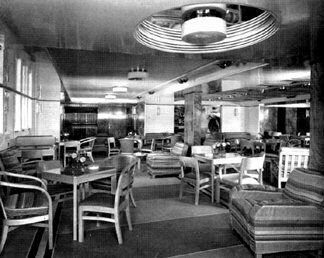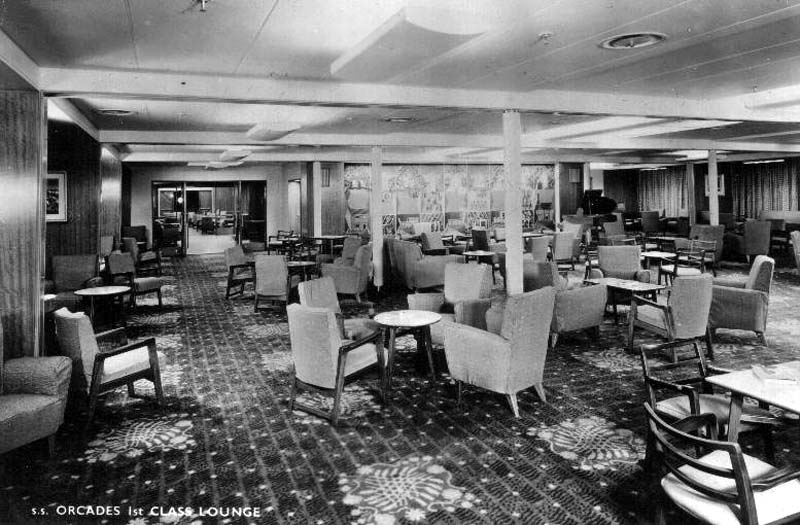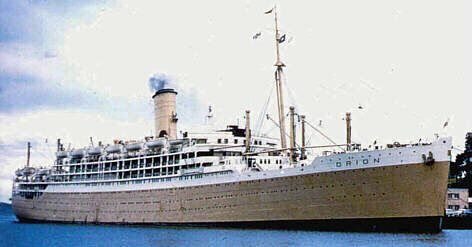I like to find Kiwis to write about who are not well known but who have made an impact on the world in some way. Brian O’Rorke is one of these people. I had never heard of him until I read about him in a book on architecture. This Wellington man certainly left his mark on ocean travel of the 1930s.
Born in Wellington in 1901, architect, Brian O’Rorke was hired to design London’s Mayor Art Gallery which, in 1925, was the first gallery to open in the city’s now noted art district.
 Brian O’Rorke (architecture.com)
Brian O’Rorke (architecture.com)
Brian also designed the Royal Observatory in Sussex and the Ashcombe Tower, a country house in Devon, as well as halls of residence at Nottingham University.
In 1972, the famous Berkeley Hotel moved to a new building in Wilton Place, Knightsbridge. Brian was commissioned to design the interior and cleverly incorporated restored features from the original hotel leaving his distinctive design style to impress all who visit. This refurbished hotel has London’s only rooftop swimming pool and the work was completed two years before Brian’s death.
SHIP COMMISSION
Brian’s clean design of the Mayor Gallery caught the attention of Colin Anderson, the director of the Orient Steam Navigation Company who asked him to create the interiors of the company’s new liner RMS Orion.
For the first time in the history of shipbuilding an architect was called upon to carry out the entire decoration of the ship!
The 28,400 ton Orion was 665 feet long and could carry 486 first-class and 653 tourist-class passengers. Eight decks were designed by Brian, and his uncluttered interiors made the Orion a unique ship. This was quite a different challenge from designing interiors for trans-Atlantic liners. The passengers were not business people travelling between Europe and New York but were mostly immigrants heading across the world to a new life.
Launched in 1934, the Orion was built for the Australasian route so the interior needed to offer air flow to cope with the tropics in a time before efficient air conditioning was available. Brian was aware of the talent New Zealander’s generally displayed so hired a number of them to help with his design.
To achieve a fluid layout he used removable and folding walls, sliding glass doors, and promenade decks that were large for passenger ships of the time. The idea was to keep cooling breezes flowing through spaces to keep passengers comfortable in the heat of the tropics. The standard route for the ship was via Gibraltar, Palma, Toulon, Naples, Port Said, Suez, Aden, Colombo then onto Australia.
The main public rooms and lounges were not known for magnificence and luxury, but for their restraint. The plain ceilings were supported by smooth white columns and illuminated by concealed lights. The tables were plain and light in colour and the comfortable chairs were covered in a light blue textile.
 Lounge on Orion (ssmaritime.com)
Lounge on Orion (ssmaritime.com)
Rooms without access to the ship’s deck were as light and uncluttered as possible. Furnishings were made of wood with clean lines, and columns were left plain. For the first time on a liner, Brian chose chromium and an early type of plastic called bakelite extensively for use throughout the ship.
In 1940, the Orion arrived in Brian’s home town, Wellington, to pick up New Zealand troops for the Second World War. The ship survived until broken up in an Antwerp shipyard in 1963.
The plain, functional interior of the Orion proved so successful, Brian was commissioned to design interiors for a number of other Orient Steam Navigation Company ships.
SS ORCADES
Launched in 1937, the Orcades was the sister ship to the Orion. Looking at photos of the two ships, the Orcades is a more impressive vessel and although only 3 years younger than her sister, is a more modern looking ship.
Brian did more of the same with the interior of this second ship. If the Orion was a success, there was little need to make drastic changes to the interior design of the Orcades. The interiors look similar in both ships but there seems to be a little more in the way of basic decoration in the public rooms of the younger ship.
 Lounge on Orcades (ssmaritime.com)
Lounge on Orcades (ssmaritime.com)
To our modern eye, the interiors of these ships resemble the interior of a ferry, rather than a liner but it must be remembered these vessels were effectively immigrant ships built to transport working people to a new life in Australia (unlike the Orion, the Orcades also sailed to New Zealand). These were not Atlantic liners catering to the rich and famous and needing to be expensively furnished to cater to that market. These were serviceable ships that needed to be as comfortable as possible for a long voyage across the world and Brian O’Rorke proved to be the man for the job!
Ceidrik Heward
Ceidrik Heward is an Amazon TOP SELLING AUTHOR and has lived and worked in 7 countries working as a TV cameraman, director and film tutor. For the past 17 years he has focused on writing and has been published in magazines and newspapers in Europe, USA, Asia and the Middle East.
His interests include photography, psychology and metaphysics. He loves to read and always has at least 3 books on the go. He has written 22 manuals/books and has just completed his 4th short novel. Ceidrik believes sharing information and stories is the best way to stimulate the imagination and enrich our lives.























 Visit Today : 143
Visit Today : 143 Total Visit : 1073215
Total Visit : 1073215
Speak Your Mind